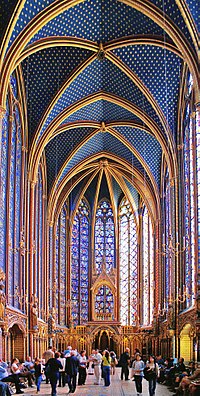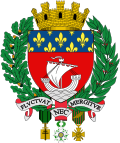

| History of Paris |
|---|
 |
| See also |
|
|
In the 10th century Paris was a provincial cathedral city of little political or economic significance, but under the kings of the Capetian dynasty who ruled France between 987 and 1328, it developed into an important commercial and religious center and the seat of the royal administration of the country.[1] The Île de la Cité became the site of the royal palace and the new cathedral of Notre-Dame, begun in 1163. The Left Bank was occupied by important monasteries, including the Abbey of Saint-Germain-des-Prés and the Abbey of St Genevieve. In the late 1100s, the collection of colleges on the left bank became one of the leading universities in Europe.[2][1] The Right Bank, where the ports, central markets, artisans and merchants were located, became the commercial center of the city, and the merchants assumed an important role in running the city. Paris became a center for the creation of illuminated manuscripts and the birthplace of Gothic architecture. Despite civil wars, the plague, and foreign occupation, Paris became the most populous city in the Western world during the Middle Ages.[3]
- ^ a b Lawrence & Gondrand 2010, p. 27.
- ^ Sarmant 2012, pp. 28–29.
- ^ Meunier 2014, p. 9.